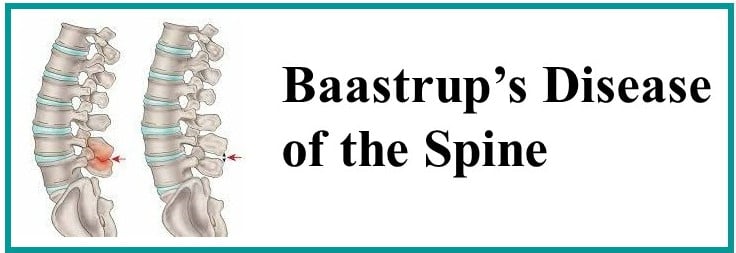During my final clinic observation, I was able to see a patient with Baastrup’s disease of the spine, or kissing spines. It is a disease that most commonly affects L4-L5. It is characterized by low back pain arising from the close contact of the spinous processes and resultant degenerative changes. Although Baastrup’s disease of the spine can arise idiopathically, it is primarily associated with other degenerative processes such as degenerative disc disease, spondylolisthesis, and spondylosis. Although primarily seen in older individuals, it can be seen in college athletes, such as gymnasts, due to repetitive spinal flexion and extension. Poor posture, trauma, and conditions that lead to excessive lordosis can contribute to the development of this disease as well.

The initial clinical presentation of an individual with Baastrup’s disease of the spine is primarily midline low back pain. The symptoms are relieved by flexion, and aggravated by extension. Traditionally, surgical techniques to excise the bursae and an osteotomy to shorten the spinous processes have been employed. Percutaneous injections of corticosteroids have been beneficial to treat inflammation and pain. Physical therapy and chiropractic care can help to manage the cases conservatively, by reducing interspinous strain and lordosis. Although I learned about Baastrup’s disease in a past radiology class, it was interesting to witness a patient with the disease and the treatment plan that the intern employed. Baastrup’s disease is underdiagnosed and often missed, and now that I have seen a case with it and conducted further research on the disease, I will be more informed for future cases.
Learn more about NUHS’s doctor of chiropractic program here.





0 Comments